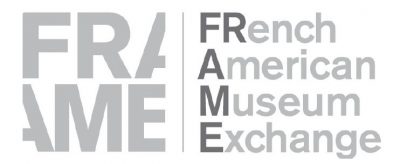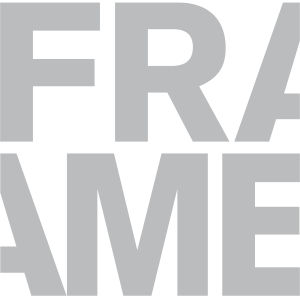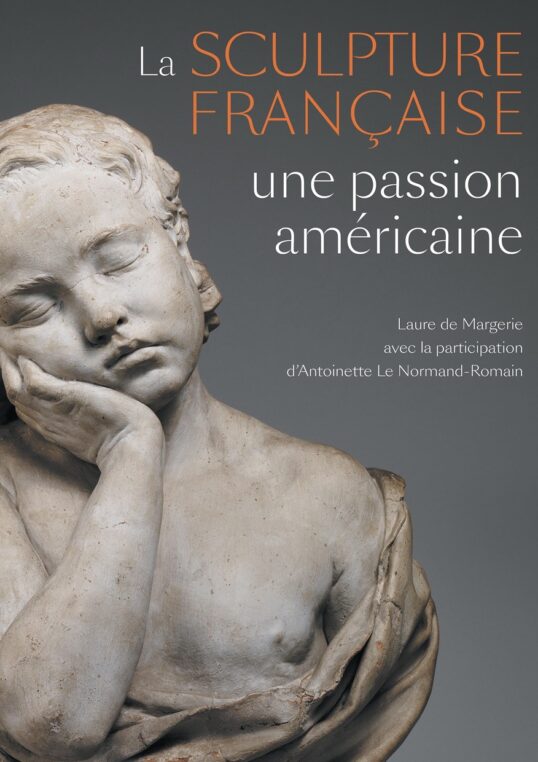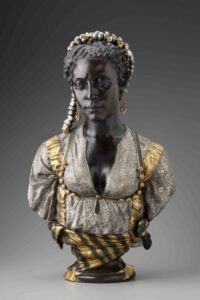
The following article was reproduced with permission of the author, Laure de Gramont.
Laure de Margerie is a long distance runner. For the past twenty years she has been researching the presence of French sculpture in the US which resulted in a database of 14 051 sculptures by 1047 artist in 612 locations, from 1500 to 1950, and she has just recently published a book in both languages, with 444 pictures based on her research. Formerly at Musée d’Orsay, where she curated a beautiful show on Charles Cordier in the Spring of 2004, she moved to the United States, where her husband Olivier Meslay was named head curator of European Arts at the Dallas Museum of Art. Since 2016, he is director of the Clark Institute in Massachusetts, a fantastic museum with a large library to research her subject. Her father, Emmanuel de Margerie, was French ambassador in Washington from 1984 to 1989 and had been director of French Museums in the 1970’s. She was presenting her book in the lavish auditorium of the INHA (Institut National d’Histoire de l’Art) which has contributed to the funding of the project, as have private sponsors such as the Didier Aaron gallery, Leonard Gianadda and the French Heritage Society, among others…
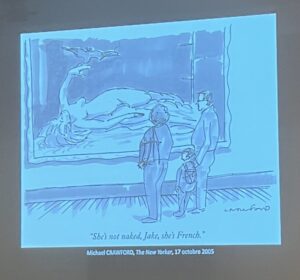
I had never realized how many public commemorative monuments and sculptures of American presidents had been commissioned from French artists at the beginning of the 19 th century. Nor did I know that 10% of French sculptures on the American soil were by Auguste Rodin. Antoinette Le Normand Romain, who used to run Musée Rodin, contributed to the book and her successor, Amélie Simier, was present at the talk. As was Christophe Leribault president of Musée d’Orsay. The founding fathers of the US were all sculpted by French artists, Caffierimade a monument to General Richard Montgomery and Houdon made a mask of George Washington in Mount Vernon. In 1865, Pierre Mazzara, who had emigrated to California, made the first statue of Abraham Lincoln after he was murdered.
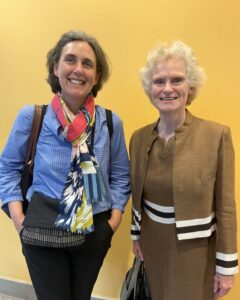
The author talked about Edouard de Laboulaye (1811-1883) who first had the idea of the Statue of Liberty by Bartholdi, one of the most emblematic French sculptures. She mentioned a monumental vase by Gustave Doré, “An apology of vine” 1878-1882, and also the numerous collections of animal sculptures by Barye, which populate American museums. Including the National Museum of Wildlife Art in Jackson, Wyoming. Sculpture was used for political and diplomatic purposes as early as 1770 to celebrate the friendship between our two nations. Later, at the beginning of the XX th century, it was acquired for decorative purposes and became a personal pleasure for collectors. While there is a Rodin Museum in Philadelphia, the first sculpture acquired by MoMA was a Maillol, in 1929. “Le Torse de l’Ile de France” was subsequently sold to the Metropolitan Museum where it is now. Samuel H. Kress, the great collector of the National Gallery bought a “Venus” modeled on Madame de Pompadour by Falconet and William Randolph Hearst furnished his gardens of San Simeon with French sculptures by Charles Georges Cassou.
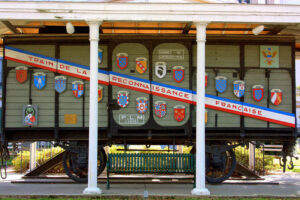
The list of artists includes some who have become French like Brancusi or who have moved to America like Mezzara. In the last 150 years, American museums have consistently acquired French sculptures every year and Laure de Margerie’s research is endless. When I asked her what her greatest discovery had been, she answered: “Every day, I find new exciting pieces and my work is a constant happiness”. She did not want to commit but admitted a weakness for the piece she put on the cover of the book, “Le Petit Dormeur” by Philippe Laurent Roland which belongs to the Metropolitan Museum.

This book is more than a sum of information, it is an incredible testimony of French American friendship and of American passion for French sculpture.
You can buy the book online or at Galignagni’s in English and in French.
And also consult the French Sculpture database.
